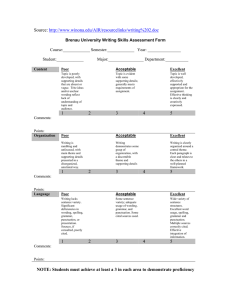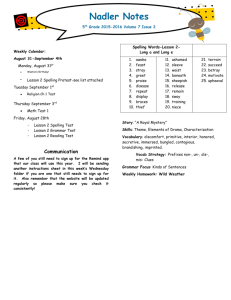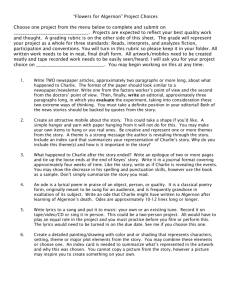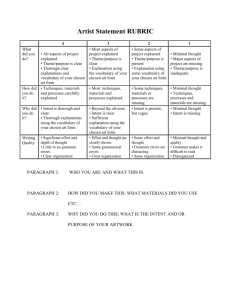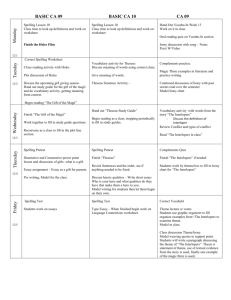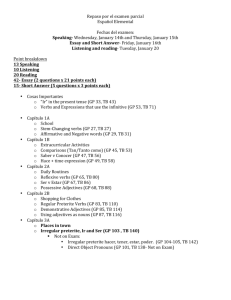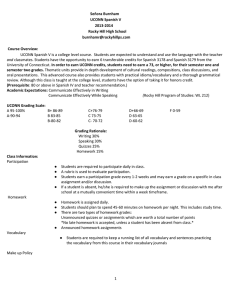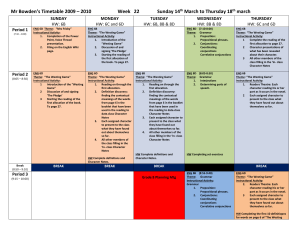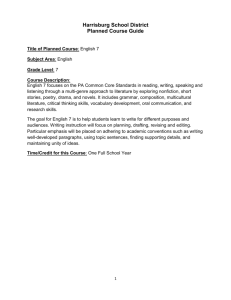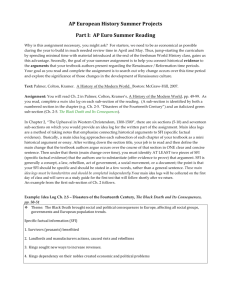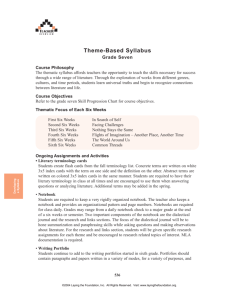Felix Sprang How to Write a Response Paper What is a response
advertisement
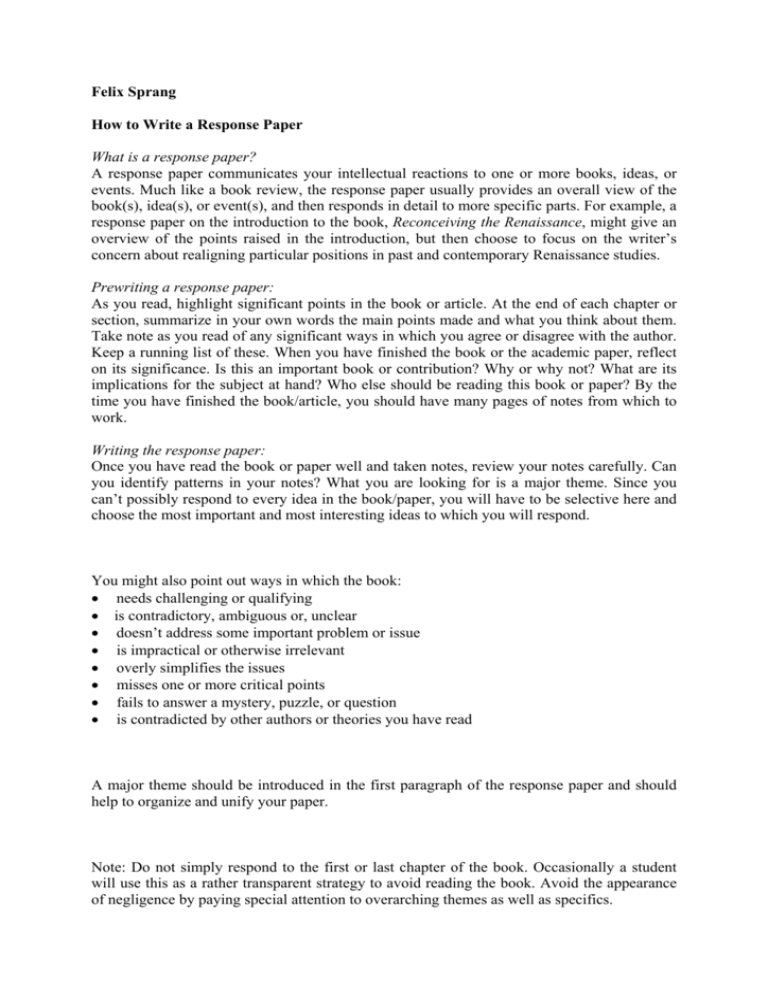
Felix Sprang How to Write a Response Paper What is a response paper? A response paper communicates your intellectual reactions to one or more books, ideas, or events. Much like a book review, the response paper usually provides an overall view of the book(s), idea(s), or event(s), and then responds in detail to more specific parts. For example, a response paper on the introduction to the book, Reconceiving the Renaissance, might give an overview of the points raised in the introduction, but then choose to focus on the writer’s concern about realigning particular positions in past and contemporary Renaissance studies. Prewriting a response paper: As you read, highlight significant points in the book or article. At the end of each chapter or section, summarize in your own words the main points made and what you think about them. Take note as you read of any significant ways in which you agree or disagree with the author. Keep a running list of these. When you have finished the book or the academic paper, reflect on its significance. Is this an important book or contribution? Why or why not? What are its implications for the subject at hand? Who else should be reading this book or paper? By the time you have finished the book/article, you should have many pages of notes from which to work. Writing the response paper: Once you have read the book or paper well and taken notes, review your notes carefully. Can you identify patterns in your notes? What you are looking for is a major theme. Since you can’t possibly respond to every idea in the book/paper, you will have to be selective here and choose the most important and most interesting ideas to which you will respond. You might also point out ways in which the book: • needs challenging or qualifying • is contradictory, ambiguous or, unclear • doesn’t address some important problem or issue • is impractical or otherwise irrelevant • overly simplifies the issues • misses one or more critical points • fails to answer a mystery, puzzle, or question • is contradicted by other authors or theories you have read A major theme should be introduced in the first paragraph of the response paper and should help to organize and unify your paper. Note: Do not simply respond to the first or last chapter of the book. Occasionally a student will use this as a rather transparent strategy to avoid reading the book. Avoid the appearance of negligence by paying special attention to overarching themes as well as specifics. Parts of a response paper: 1. Introduction Identifies major theme(s) of the book(s) and your intellectual reaction to them. 2. Body Systematically addresses your areas of agreement and disagreement with the author(s), giving reasons, facts, and examples. Be specific and detailed. The evidence should be connected to your major theme. If you are responding to multiple books or articles, you may compare and contrast the authors based on your major theme. Be sure to cite the page when you are using specific ideas or quotes. Note that your personal beliefs, if they are to be considered valid, must be supported by facts and logic. If you cannot back up a statement with facts and logic, leave the statement out of the paper. 3. Conclusion Summarizes your reaction and sets out your ideas about the significance of the book, its implications, and perhaps who else should be reading it. Writing standards for response papers: Response papers should be written using the standards for any academic paper: • Spelling and grammar should be perfect. You can insure this by using a standard word processing program’s spell check and grammar check programs. Not only do these programs allow you to hand in a paper free from spelling and grammatical mistakes (always impressive to a professor), but they actually improve your grammar and spelling as well. • A standard citation method must be used whenever you refer to another person’s ideas or include quotations. Use the MLA style manual assigned to format your paper and to cite all ideas that are not your own. http://www.lib.berkeley.edu/TeachingLib/Guides/MLAstyle.pdf • The paper should be typed, double-spaced, with standard one-inch margins and type size. Adapted freely from “Elements of the Essay”, excerpted from An Expose Companion, a manual provided to Harvard University writing students. http://www.usd.edu/fye/sjwriteresp.html
